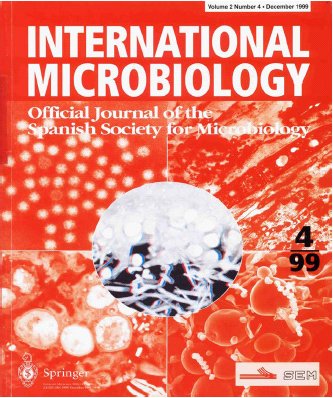Enumeration and isolation of viral particles from oligotrophic marine environments by tangential flow filtration
Keywords:
virus enumeration, tangential flow filtration, oligotrophic environments• marine viruses, transmission electron microscopyAbstract
A method for concentrating, enumerating and isolating viral particles from marine water samples was developed and evaluated. The method consists of a concentration step by a tangential flow filtration (TFF) system, ultrafiltration by centrifugal concentrator, and visualization by transmission electron microscopy (TEM). This procedure allows to reduce volumes of ca. 2 l of seawater to 10–20 μl, which can be dispensed on electron microscopy grids to count total viral particles. This method allows the recovery of small numbers of viral particles from oligotrophic seawater samples, in which viral numbers ranged from 105 to 106 viral particles/ml. The tangential flow filtration system was evaluated as quantitative technique using suspensions of two different bacteriophages (T6 and ΦX174) in autoclaved seawater. Recovery rates varied depending on both the viral morphology and flow rate; recovery percentages reached 117.4% for T6 and 60.6% for ΦX174 using low flow rate.Downloads
Published
2010-03-16
Issue
Section
Research Articles
License
Submission of a manuscript to International Microbiology implies: that the work described has not been published before, including publication in the World Wide Web (except in the form of an Abstract or as part of a published lecture, review, or thesis); that it is not under consideration for publication elsewhere; that all the coauthors have agreed to its publication. The corresponding author signs for and accepts responsability for releasing this material and will act on behalf of any and all coauthors regarding the editorial review and publication process.If an article is accepted for publication in International Microbiology, the authors (or other copyright holder) must transfer to the journal the right–not exclusive–to reproduce and distribute the article including reprints, translations, photographic reproductions, microform, electronic form (offline, online) or any other reproductions of similar nature. Nevertheless, all article in International Microbiology will be available on the Internet to any reader at no cost. The journal allows users to freely download, copy, print, distribute, search, and link to the full text of any article, provided the authorship and source of the published article is cited. The copyright owner's consent does not include copying for new works, or resale. In these cases, the specific written permission of International Microbiology must first be obtained.
Authors are requested to create a link to the published article on the journal's website. The link must be accompanied by the following text: "The original publication is available on LINK at <http://www.im.microbios.org>. Please use the appropiate URL for the article in LINK. Articles disseminated via LINK are indexed, abstracted, and referenced by many abstracting and information services, bibliographic networks, subscription agencies, library networks, and consortia.




